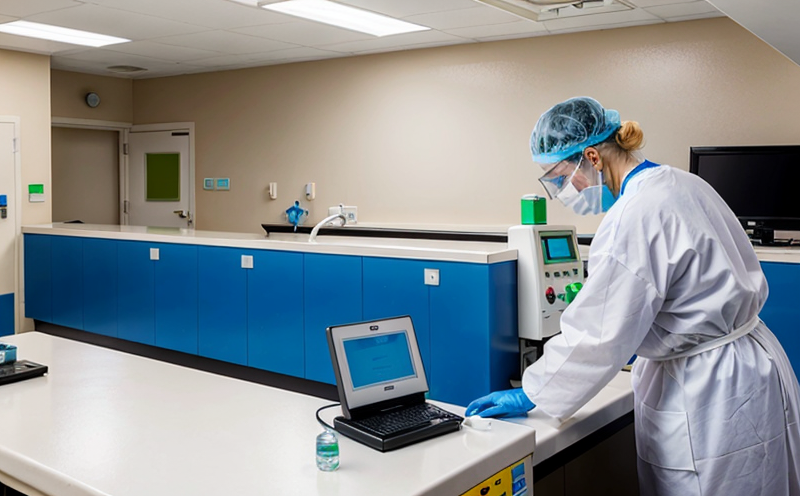Hospital Bed Surface Microbiological Testing
Ensuring a sterile and hygienic environment in hospitals is paramount to patient care. Hospital bed surface microbiological testing plays a critical role in maintaining this hygiene standard, particularly in high-risk areas such as intensive care units (ICUs), operating rooms, and neonatal wards. This service involves the meticulous sampling of surfaces on hospital beds and subsequent analysis to detect the presence and concentration of various microorganisms.
The process begins with proper specimen collection, which is crucial for accurate testing results. Samples are taken from multiple points across the bed surface, including the mattress, headboard, footboard, rails, and any other surfaces that a patient might come into contact with. This ensures comprehensive coverage of potential contamination areas.
Once collected, samples are transported to our laboratory under controlled conditions to prevent any potential growth or alteration in microbial composition. Upon arrival at the lab, they undergo rigorous preparation steps which may include dilution if necessary and plating on appropriate media for cultivation. This step is vital as it allows us to isolate different types of microorganisms present.
Our team then employs advanced microbiological techniques such as culturing on selective or differential media, identifying colonies through microscopic examination, biochemical tests, and molecular methods like PCR if required. These analyses help determine not only what kinds of microbes are present but also their relative abundance.
The results of these tests provide invaluable insights into the current hygiene levels within hospitals and highlight any areas that may need improvement. They can be used by healthcare facilities to implement targeted cleaning protocols, adjust infection control measures, or make necessary adjustments in their sterilization procedures.
Regular monitoring through periodic testing helps maintain consistent standards across all departments of a hospital. It also serves as an essential tool for evaluating the effectiveness of new interventions aimed at reducing nosocomial infections – those acquired during hospitalization.
Benefits
- Improved Patient Safety: By identifying and addressing sources of contamination early, this testing helps prevent the spread of infections among patients.
- Promotes Compliance: Ensures adherence to strict hygiene standards set by regulatory bodies like WHO or CDC.
- Enhances Reputation: Demonstrates a commitment to quality care and patient safety, enhancing your hospital’s reputation.
- Saves Costs: Early detection of issues can prevent more serious outbreaks that would otherwise require extensive treatment and resources.
Quality and Reliability Assurance
We adhere to strict quality assurance protocols throughout every stage of our testing process. From sample collection to final report generation, we ensure accuracy and reliability using state-of-the-art equipment and methodologies recommended by international standards such as ISO 14695 for cleanroom environments.
Our laboratory personnel are trained extensively in microbiology and have years of experience handling sensitive samples safely and effectively. This expertise combined with our stringent quality control procedures guarantees that all test results reflect true conditions without bias or error.
We maintain rigorous documentation practices which include detailed logs of each sample’s journey from collection to completion, ensuring traceability at every step. Additionally, regular internal audits and external accreditation ensure continuous improvement in our operations.
International Acceptance and Recognition
The results from our hospital bed surface microbiological tests are widely accepted across various international standards including those established by WHO, CDC, and national healthcare organizations worldwide. These certifications not only validate the accuracy of our testing methods but also add credibility to any reports generated.
Our compliance with global hygiene benchmarks means that hospitals using our services can rest assured their data meets the highest industry standards. This makes it easier for them when seeking accreditation or applying for grants related to improving patient care practices.





